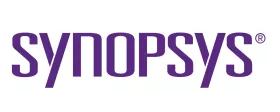Synopsys Bold Prediction: 50% of New HPC Chip Designs Will Be Multi-Die in 2025
Monolithic chips have been the workhorses behind decades of technological advancement. But just as the industrial revolution saw workhorses replaced with more efficient and powerful machinery, the semiconductor industry is on the cusp of a similar revolution.
Multi-die and chiplet-based designs — which integrate multiple specialized dies in a single package or stack integrated circuits vertically — stand to deliver far greater performance and flexibility than monolithic chips, capable of supporting the insatiable processing demands of high-performance computing (HPC) and AI-driven workloads. But pursuing these advanced chip designs has required the deepest of pockets and most advanced R&D capabilities.
Until now.
Multi-die technologies, tools, flows, and IP have matured rapidly. Engineering expertise has evolved. And foundry capacity continues to expand. With this in mind, we predict 50% of new HPC chip designs will be 2.5D or 3D multi-die in 2025.
Foundries preparing for wave of 2.5D and 3D multi-die designs
It takes more than R&D to bring 2.5D and 3D multi-die designs to market. It also requires high-bandwidth, low-latency interconnects (3DIO), advanced manufacturing processes with sufficient capacity, and sophisticated design tools and IP.
Open industry standards like UCIe (Universal Chiplet Interconnect Express) continue to mature, helping simplify and strengthen the connectivity between heterogeneous chiplets while reducing risk and accelerating design cycles. The increased adoption of UCIe for HPC, AI, data center, and edge applications is driving significant demand for 2.5D and 3D multi-die designs.
In addition to the maturation and proliferation of advanced interconnects, foundries are preparing for the oncoming wave of 2.5D and 3D multi-die designs. This includes new manufacturing processes that offer denser bumps and higher performance. Additional package, interposer, and integration options provide cost and architectural flexibility. And expanded production capacity means more designs and prototypes can be brought to market.
To read the full article, click here
Related Chiplet
- Interconnect Chiplet
- 12nm EURYTION RFK1 - UCIe SP based Ka-Ku Band Chiplet Transceiver
- Bridglets
- Automotive AI Accelerator
- Direct Chiplet Interface
Related Blogs
- How Multi-Die Designs Boost Automotive Chip Innovation
- A Beginner’s Guide to Chiplets: 8 Best Practices for Multi-Die Designs
- Synopsys and Alchip Collaborate to Streamline the Path to Multi-die Success with Soft Chiplets
- Streamlining Functional Verification for Multi-Die and Chiplet Designs
Latest Blogs
- Bosch and the chiplet revolution: Enabling software-defined mobility
- Addressing the Biggest Bottleneck in the AI Semiconductor Ecosystem
- Thermal Management in 3D-IC: Modeling Hotspots, Materials, & Cooling Strategies
- 3D Chips: Socionext Achieves Two Successful Tape-Outs in Just Seven Months
- Intel Foundry Collaborates with Partners to Drive an Open Chiplet Marketplace
